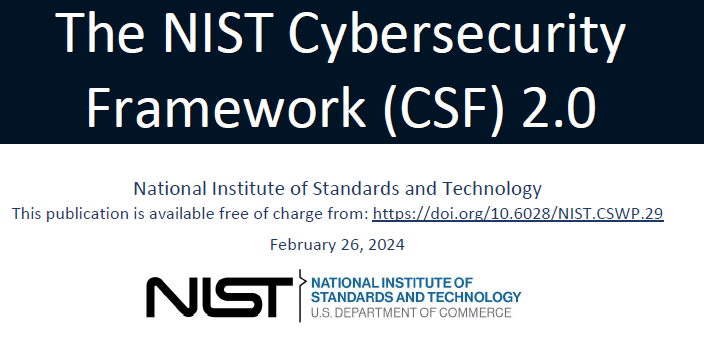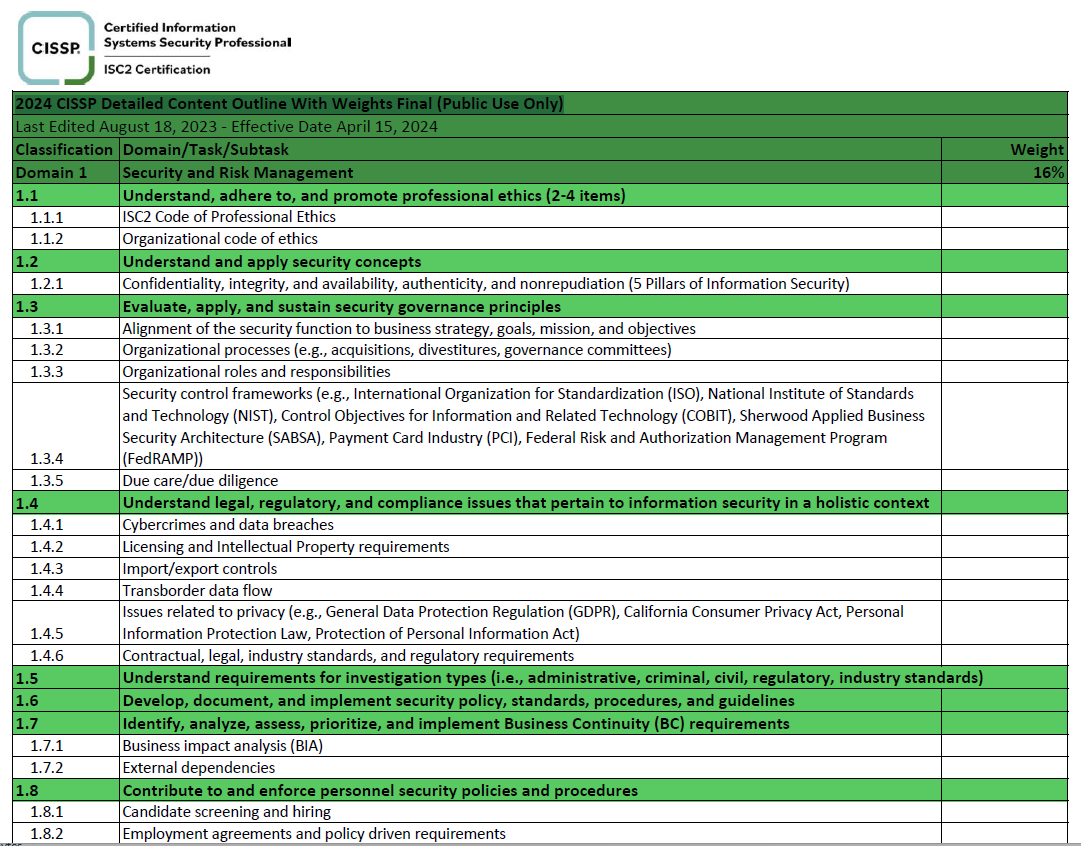Navigating the Waters of Cybersecurity with NIST CSF 2.0
In the ever-evolving landscape of digital threats, the NIST Cybersecurity Framework (CSF) 2.0 emerges as a beacon for organizations navigating the treacherous waters of cybersecurity risk management. This upgraded framework, developed by the National Institute of Standards and Technology, offers a robust structure designed to enhance an organization's ability to manage cybersecurity risks effectively. Its relevance extends across industries, sectors, and borders, providing a universal language and model for cybersecurity risk management that is particularly valuable for professionals preparing for the CISSP exam.
Direct PDF link for CSF 2.0: https://doi.org/10.6028/NIST.CSWP.29
The Evolution of CSF: From 1.0 to 2.0
The transition from CSF 1.0 to 2.0 represents a significant evolution in cybersecurity practices, reflecting the latest challenges and learnings from the industry. CSF 2.0 expands on its predecessor by introducing new elements that emphasize governance, supply chain risk management, and the need for continuous adaptation to the changing threat landscape. For CISSP candidates, understanding these changes is crucial, as they underscore the importance of a holistic and adaptive approach to cybersecurity.
Core Components of CSF 2.0
CSF 2.0 comprises three main components: the Core, Profiles, and Tiers. Each serves a distinct purpose in guiding organizations through the process of identifying, assessing, and managing cybersecurity risks.

- The Core provides a set of cybersecurity activities and outcomes, organized into Functions: Identify, Protect, Detect, Respond, and Recover, with the addition of Govern as a new Function. This structure aids organizations in developing comprehensive cybersecurity programs that align with their specific needs and risk profiles.
- Profiles allow organizations to tailor the Core to their specific objectives, risk appetite, and sector requirements. Creating Current and Target Profiles helps organizations map out their cybersecurity journey, focusing on areas that need improvement.
- Tiers describe the degree of sophistication and integration of an organization's cybersecurity risk management practices. Moving from Tier 1 (Partial) to Tier 4 (Adaptive) indicates a maturity in managing cybersecurity risks in a dynamic and responsive manner.
Governance at the Helm
A standout feature of CSF 2.0 is its emphasis on governance. This shift recognizes the critical role that leadership and organizational policies play in shaping effective cybersecurity strategies. Governance ensures that cybersecurity risks are managed in alignment with business objectives and compliance requirements, making it a crucial area of study for CISSP aspirants.

Supply Chain in the Spotlight
Another key aspect of CSF 2.0 is its focus on managing cybersecurity risks within the supply chain. The framework acknowledges the interconnected nature of today's business ecosystems and the need to secure not just the organization but also its network of partners and suppliers. For CISSP candidates, understanding supply chain risks and strategies for mitigating them is increasingly important in today's global marketplace.

A Continuous Journey of Improvement
CSF 2.0 is designed to be a living framework, encouraging organizations to continuously assess and improve their cybersecurity practices. This approach is aligned with the CISSP philosophy of ongoing learning and adaptation to emerging threats and technologies.

A Stepping Stone for CISSP Candidates
For professionals preparing for the CISSP exam, the NIST CSF 2.0 offers valuable insights into the best practices of cybersecurity risk management. It provides a comprehensive model that not only aids in exam preparation but also equips candidates with the knowledge to implement effective cybersecurity strategies in their organizations. As the digital landscape continues to evolve, the principles and structure of CSF 2.0 will remain critical tools in the arsenal of cybersecurity professionals worldwide.
While you are here: Did you enjoy CarlsCloud™ CISSP Exam Resources related content today?
If so, buy me a coffee or just shoot me a note via LinkedIn to say thanks! It would certainly mean a lot to me!



